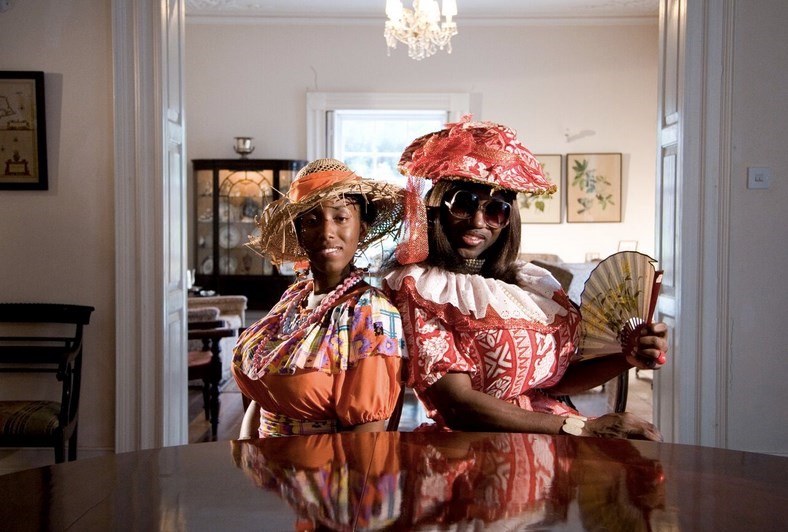A new retrospective highlights the work of Sonia Boyce, an artist fascinated with the act of masquerade, who is still creating thought-provoking work today
Who? Earlier this year, artist Sonia Boyce found herself in the centre of a controversy. In the run-up to her retrospective at Manchester Art Gallery, Boyce and gallery staff removed a 19th-century John William Waterhouse painting of a young warrior and a pond full of bare-breasted nymphs, nipples skimming the lily pads, from the permanent collection’s walls.
The media attacked; social media got nasty. The simple intervention was intended to be a conversation starter – a series of questions for the public were left in the painting’s place – but the action was wildly misinterpreted as censorship, or even an attack on free speech. “Paintings go up and down all the time, everywhere. But to do it publicly was seen as a militant act,” Boyce says. “Hidden power exists in art galleries. This project has revealed how many people want those hidden power structures to stay in place.”
Born in 1962, Boyce is a critically acclaimed British artist who lives and works in London. She trained in Fine Art at Stourbridge College in the West Midlands and came of age as an artist during the British Black Arts movement in the 1980s. Her 1985 painting Missionary Position II was the first artwork by a black artist acquired by the Tate collection. Since the 1990s she has focused on collaborative projects, mixing sound, video, text, performance and other media. Her work is actively political, innately funny, generous and spontaneous. Conversation, for her, is key. “It might sound counter-intuitive to visual art to say the work emerges out of conversation. But that’s my process, because I work with people,” she says.

What? Boyce collects names of black British female musicians for her ongoing project the Devotional Series, from Susan Cadogan to Shola Ama. Running since 1999, following a talk with the Liverpool Black Sisters, each of the names are given to Boyce via friends, family or word of mouth, and written on wallpaper. She also collects magazine cuttings and other everyday ephemera to highlight the everyday presence of the musicians’ lives. A Spotify playlist for The Devotional Series can be added to by listeners.
Other collaborative works include The Audition, an open call at Manchester’s Cornerhouse in 1997 that invited participants to try on an afro wig and be photographed, and Exquisite Cacophony an improvised performance between experimental vocalist Elaine Mitchener and white hip hop artist Astronautalis at the Victoria and Albert Museum.
Teaching is also an essential part of Boyce’s life and work. She has taught in art schools across the UK since she graduated and is currently Professor of Black Art and Design at the University of the Arts London.

Why? Masquerading, acting up, collective memory and collective announcing are some of the biggest themes of her retrospective, Boyce says, which opened at Manchester Art Gallery on March 22. “I’m fascinated by what people do when they come together,” she says.
The exhibition presents six major works, including a newly commissioned video and performance project titled Six Acts. Discussions were ignited by a portrait of 19th-century black Shakespearean actor Ira Aldrige, Othello the Moor of Venice. Aldrige lived in Manchester and the portrait started Manchester Art Gallery’s permanent collection. “It’s not a painting of him… it’s a painting of him ‘as’ something – as Othello or a black subject,” Boyce says. “So Shakespeare, race, gender and cross-dressing were the coordinates that kickstarted the ideas.”
Artist Lasana Shabazz performed in “white-up” make-up in the space, at Boyce’s invitation, and she also invited drag artists Anna Phylatic, Cheddar Gorgeous, Liquorice Black and Venus Vienna to respond to the discussion. The final six acts are presented in a series of videos, including the removed Waterhouse painting.
Sonia Boyce is on at Manchester Art Gallery until July 22, 2018.
